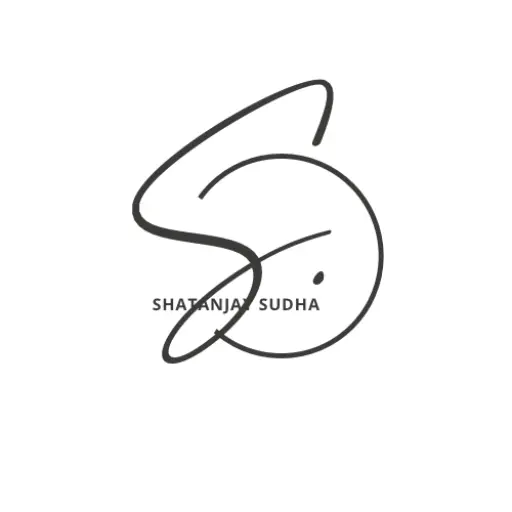Unlock the Secrets to Controlling Your Stress Response
Boost resilience and enhance well-being with proven tools from neurobiology
Decoding Stress Through Neuroscience
Welcome to the science of emotions, where we move beyond vague labels like “stressed” and dive deep into the biological mechanisms driving our internal state. Drawing from the fields of neurobiology and ophthalmology, I want to offer you an ‘organizational logic’ — a framework rooted in physiology and neuroscience — to help you understand and manage stress and emotions more effectively.
Forget just feeling overwhelmed; learn concrete stress management techniques that empower you to regain control, support others, and optimize your mental and physical health.
Understanding the Stress Response: Your Body’s Alarm System
Stress isn’t inherently bad. At its core, stress is a generic survival system designed to mobilize your brain and body for action. It wasn’t crafted solely for escaping tigers; it’s a fundamental mechanism to prepare you for any perceived challenge – physical, psychological, or immunological.
When a stressor hits (a tight deadline, a sudden scare, an infection), a chain reaction begins:

The Acute Stress Cascade
Sympathetic Nervous System Activation
Neurons running down your spine (the sympathetic chain ganglia) fire rapidly.
Chemical Surge
These neurons trigger the release of acetylcholine, leading to the release of epinephrine (adrenaline) from nerve endings and norepinephrine/adrenaline from the adrenal glands.
Body-Wide Mobilization
Adrenaline binds to beta-receptors, causing:
- Increased heart rate and blood pressure
- Blood shunted to muscles (legs, heart) for movement
- Pupil dilation for heightened alertness
- Sharpened focus (though narrowed)
- Suppression of “non-essential” functions like digestion and reproduction

Tool #1: The Fastest Way to Calm Down
The Physiological Sigh: Your Immediate Stress Management Technique
Feeling flooded by that acute stress response? Harness the power of your breath to activate your calming parasympathetic nervous system. The fastest, most physiologically grounded tool is the Physiological Sigh.
The Science Behind It
Breathing directly controls heart rate via the vagus nerve:
- Inhale: Diaphragm moves down, heart space increases, blood flow slows slightly. The brain signals the heart to speed up.
- Exhale: Diaphragm moves up, heart space decreases, blood flow speeds up. The brain signals the heart to slow down.
Why a Double Inhale?
During stress, tiny lung sacs (alveoli) collapse, trapping CO2, increasing agitation. The double inhale reinflates them. The long exhale powerfully expels built-up CO2, triggering relaxation.
How To Do It
First Inhale
Take a deep, full inhale through your nose.
Second Inhale
Without exhaling, take a second, shorter “sip” of air in through your nose to fully inflate the lungs.
Long Exhale
Follow immediately with a long, slow, complete exhale through the mouth (make it longer than your inhales).
Effect: Repeat 1-3 times. This rapidly reduces CO2, lowers heart rate (within 20-30 seconds), and calms the nervous system. It’s nature’s reset button, used spontaneously during sobbing or panic.
Stress on Three Time Scales: Tailoring Your Stress Management Techniques
Not all stress is equal. Understanding the duration is key to applying the right stress management techniques.
Short-Term Stress: The Power Surge
Nature: The acute “fight-or-flight” response described above.
Benefits: Crucially important and often overlooked!
- Boosts Immunity: Adrenaline mobilizes immune cells to combat infections
- Sharpens Cognition: Narrows and heightens focus for rapid assessment
- Prepares for Action: Fuels muscles, increases alertness
Tool: Controlled Stress for Immunity
Mimicking the stress response deliberately can boost immunity. Protocol (Similar to Wim Hof/Tumo): ~25 cycles of deep, vigorous inhales/exhales, followed by a full exhale and breath-hold (15-60 sec), repeated.
WARNING: Never do near water. Can cause fainting. Consult your doctor first. Avoid if you have cardiovascular, pulmonary, or eye pressure issues. This is an advanced technique.
Medium-Term Stress: Building Your Stress Threshold
Nature: Persistent stressors (work overload, ongoing caregiving, exam periods) where the stress response doesn’t fully shut down between episodes. Risk of sleep disruption marks the shift from acute.
The Challenge: Feeling constantly overwhelmed, depleted resilience.
Tool: Stress Inoculation & Raising Threshold
Train your mind to stay calm while the body is activated:
- Induce Controlled Activation: Safely elevate your physiology (e.g., high-intensity exercise sprint, cold shower – approved by your doctor)
- Practice Calm Amidst Activation: While your body is revved up:
- Dilate Your Gaze: Shift from tunnel vision to panoramic vision
- Focus on Steady Breathing: Maintain rhythmic breathing despite exertion
Effect: Teaches your nervous system that high activation doesn’t have to mean panic. Practice 1-2 times per week.
Long-Term Stress: The Truly Damaging Kind
Nature: Chronic, unrelenting stress where adrenaline/cortisol remain elevated. Sleep is consistently poor. This is where harmful effects manifest (hippocampal shrinkage, weakened immunity, cardiovascular disease, burnout).
Core Stress Management Techniques
Non-Negotiable Foundations: Prioritize sleep, regular exercise, and good nutrition.
The Most Powerful Tool: Social Connection: Humans are inherently social. Meaningful connection triggers serotonin release which enhances well-being and counteracts neural damage.
Supplemental Support (Consult Your Doctor)
L-Theanine (100-400mg): Promotes relaxation without drowsiness. Take 30-60 min before bed or during stress.
Ashwagandha (300-600mg): Reduces perceived stress and cortisol. Cycle usage.
Melatonin (Caution): Not recommended for routine stress management. Focus on sleep hygiene first.
Implementing Stress Management Techniques
Now that you understand the different types of stress and their management techniques, it’s time to put them into practice. Start with the physiological sigh for immediate relief, then gradually incorporate the other techniques into your routine.
Remember that consistency is key – even small daily practices can significantly improve your stress resilience over time.

Harnessing Stress, Not Just Surviving It
Stress isn’t a monolithic enemy. It’s a powerful, ancient biological system. The goal isn’t elimination but mastery – understanding its mechanisms and wielding effective stress management techniques.
Short-Term Approach
Leverage the physiological sigh for instant calm. Recognize acute stress can be beneficial for focus and immunity.
Medium-Term Strategy
Build resilience and raise your stress threshold through deliberate practice (calm mind, activated body).
Long-Term Foundation
Fortify with sleep, exercise, nutrition, and invest in genuine social connection – your brain’s most potent buffer.
You cannot always control external events, but you have immense power to control your response through these science-backed strategies. Implement these stress management techniques to navigate life’s currents with greater calm, resilience, and well-being.


Leave a Reply